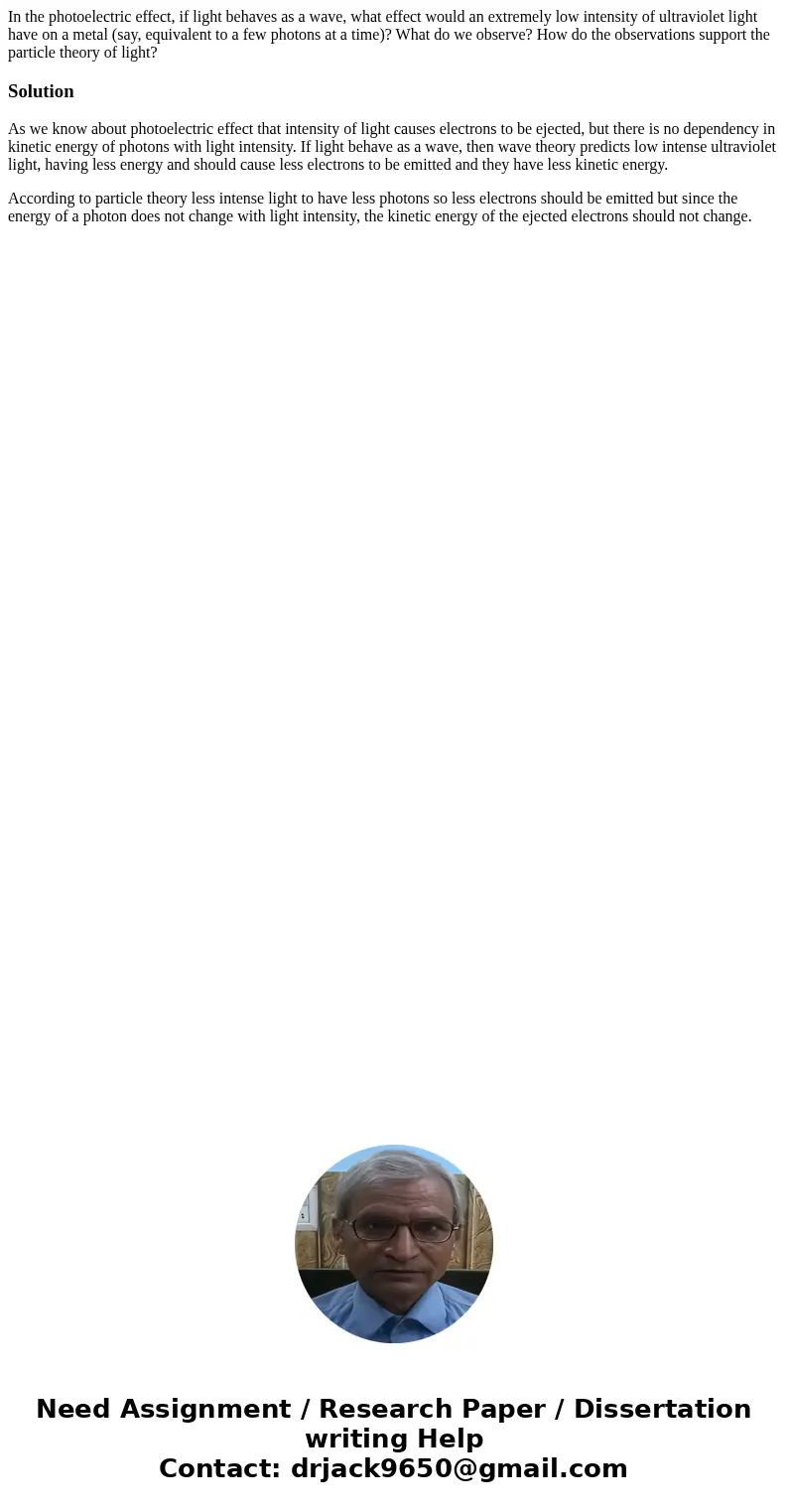In the photoelectric effect if light behaves as a wave what
In the photoelectric effect, if light behaves as a wave, what effect would an extremely low intensity of ultraviolet light have on a metal (say, equivalent to a few photons at a time)? What do we observe? How do the observations support the particle theory of light?
Solution
As we know about photoelectric effect that intensity of light causes electrons to be ejected, but there is no dependency in kinetic energy of photons with light intensity. If light behave as a wave, then wave theory predicts low intense ultraviolet light, having less energy and should cause less electrons to be emitted and they have less kinetic energy.
According to particle theory less intense light to have less photons so less electrons should be emitted but since the energy of a photon does not change with light intensity, the kinetic energy of the ejected electrons should not change.

 Homework Sourse
Homework Sourse